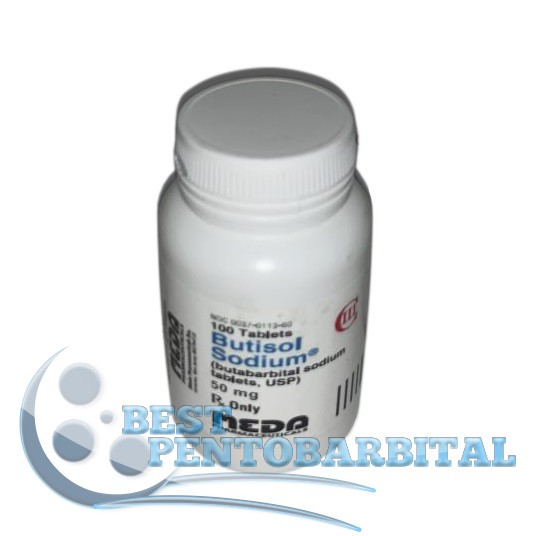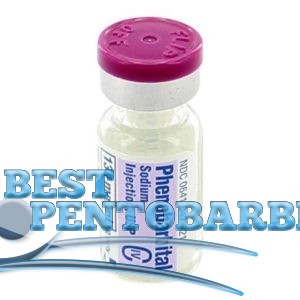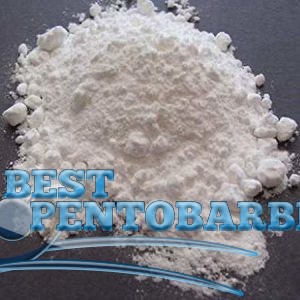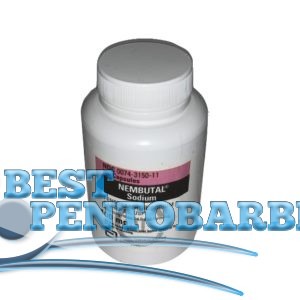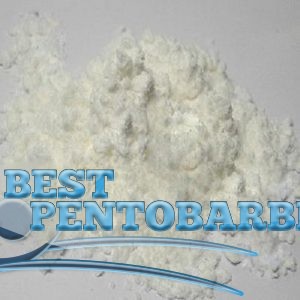Buy Butisol Sodium 50mg Online
€300.00 – €1,800.00Price range: €300.00 through €1,800.00
[yasr_overall_rating size=”large”]
Description
Buy Butisol Sodium 50mg Online
Buy Butisol Sodium 50mg Online, BUTISOL SODIUM (butabarbital sodium tablets, USP and butabarbital sodium oral solution, USP) is indicated for use as a sedative or hypnotic.
Since barbiturates appear to lose their effectiveness for sleep induction and sleep maintenance after 2 weeks, use of BUTISOL (butabarbital sodium tablets) SODIUM® in treating insomnia should be limited to this time (see CLINICAL PHARMACOLOGY above).
DOSAGE AND ADMINISTRATION
Usual adult dosage
Daytime sedative – 15 to 30 mg, 3 or 4 times daily.
Bedtime hypnotic – 50 to 100 mg.
Preoperative sedative – 50 to 100 mg, 60 to 90 minutes before surgery.
Usual pediatric dosage
Preoperative sedative – 2 to 6 mg/kg maximum 100 mg.
Special patient population
Dosage should be reduced in the elderly or debilitated because these patients may be more sensitive to barbiturates. Dosage should be reduced for patients with impaired renal function or hepatic disease (see PRECAUTIONS).
HOW SUPPLIED
BUTISOL SODIUM (butabarbital sodium tablets, USP):
30 mg – colored green, scored, imprinted “BUTISOL (butabarbital sodium tablets) SODIUM” and 37/113 in bottles of 100 (NDC 0037-0113-60).
50 mg – colored orange, scored, imprinted “BUTISOL (butabarbital sodium tablets) SODIUM” and 37/114 in bottles of 100 (NDC 0037-0114-60).
BUTISOL (butabarbital sodium tablets) SODIUM (butabarbital sodium oral solution, USP): 30 mg/ 5 mL, alcohol (by volume) 7% – colored green, in bottles of one pint (NDC 0037-0110-16).
Contains FD&C Yellow No. 5 (See PRECAUTIONS).
Storage
Store at controlled room temperature 20°-25°C (68°-77°F). Dispense in a tight container.
SIDE EFFECTS
The following adverse reactions have been observed with the use of barbiturates in hospitalized patients. Because such patients may be less aware of certain of the milder adverse effects of barbiturates, the incidence of these reactions may be somewhat higher in fully ambulatory patients.
More than 1 in 100 patients. The most common adverse reaction, somnolence, is estimated to occur at a rate of 1 to 3 patients per 100.
Less than 1 in 100 patients. The most common adverse reactions estimated to occur at a rate of less than 1 in 100 patients listed below, grouped by organ system, and by decreasing order of occurrence are:
Central nervous system/psychiatric: Agitation, confusion, hyperkinesia, ataxia, CNS depression, nightmares, nervousness, psychiatric disturbance, hallucinations, insomnia, anxiety, dizziness, thinking abnormality.
Respiratory: Hypoventilation, apnea.
Cardiovascular: Bradycardia, hypotension, syncope.
Gastrointestinal: Nausea, vomiting, constipation.
Other reported reactions:Headache, hypersensitivity (angioedema, skin rashes, exfoliative dermatitis), fever, liver damage. a
Drug Abuse And Dependence
Controlled substance
Schedule III.
Abuse and dependence
Abuse and addiction are separate and distinct from physical dependence and tolerance. Abuse is characterized by misuse of the drug for non-medical purposes, often in combination with other psychoactive substances. Physical dependence is a state of adaptation that is manifested by a specific withdrawal syndrome that can be produced by abrupt cessation, rapid dose reduction, decreasin g blood level of the drug and/or administration of an antagonist. Tolerance is a state of adaptation in which exposure to a drug induces changes that result in a diminution of one or more of the drug’s effects over time. Tolerance may occur to both the desired and undesired effects of drugs and may develop at different rates for different effects.
Addiction is a primary, chronic, neurobiological disease with genetic, psychosocial, and environmental factors influencing its development and manifestations. It is characterized by behaviors that include one or more of the following: impaired control over drug use, compulsive use, continued use despite harm, and craving. Drug addiction is a treatable disease, utilizing a multidisciplinary approach, but relapse is common.
DRUG INTERACTIONS
Most reports of clinically significant drug interactions occurring with the barbiturates have involved phenobarbital. However, the application of these data to other barbiturates appears valid and warrants serial blood level determinations of the relevant drugs when there are multiple therapies.
Anticoagulants
Phenobarbital lowers the plasma levels of dicumarol and causes a decrease in anticoagulant activity as measured by the prothrombin time. Barbiturates can induce hepatic microsomal enzymes resulting in increased metabolism and decreased anticoagulant response of oral anticoagulants (e.g., warfarin, acenocoumarol, dicumarol, and phenprocoumon). Patients stabilized on anticoagulant therapy may require dosage adjustments if barbiturates are added to or withdrawn from their dosage regimen. BUTISOL 50MG (100TABLETS) price, BUTISOL 50MG (100TABLETS) for sale, buy BUTISOL 50MG (100TABLETS) online, order legit barbiturate butisol online, buy butisol sodium online
Additional information
| SELECT QUANTITY | 100 TABLETS/PILLS, 200 TABLETS/PILLS, 400 TABLETS/PILLS, 500 TABLETS/PILLS, 800 TABLETS/PILLS |
|---|
Related products
-
Add to cart
€300.00Original price was: €300.00.€270.00Current price is: €270.00. -
€215.00 – €1,750.00Price range: €215.00 through €1,750.00Select options This product has multiple variants. The options may be chosen on the product page
-
€310.00 – €1,900.00Price range: €310.00 through €1,900.00Select options This product has multiple variants. The options may be chosen on the product page
-
€345.00 – €9,250.00Price range: €345.00 through €9,250.00Select options This product has multiple variants. The options may be chosen on the product page

